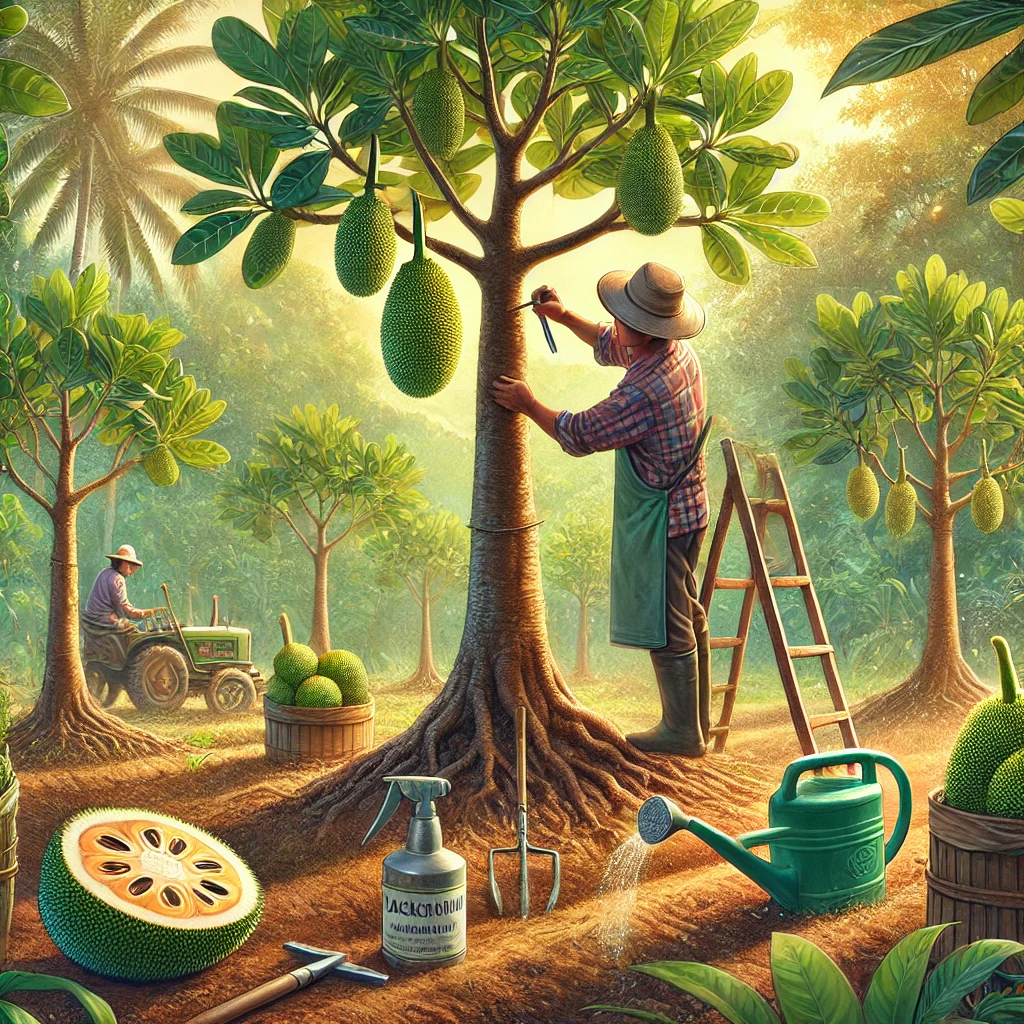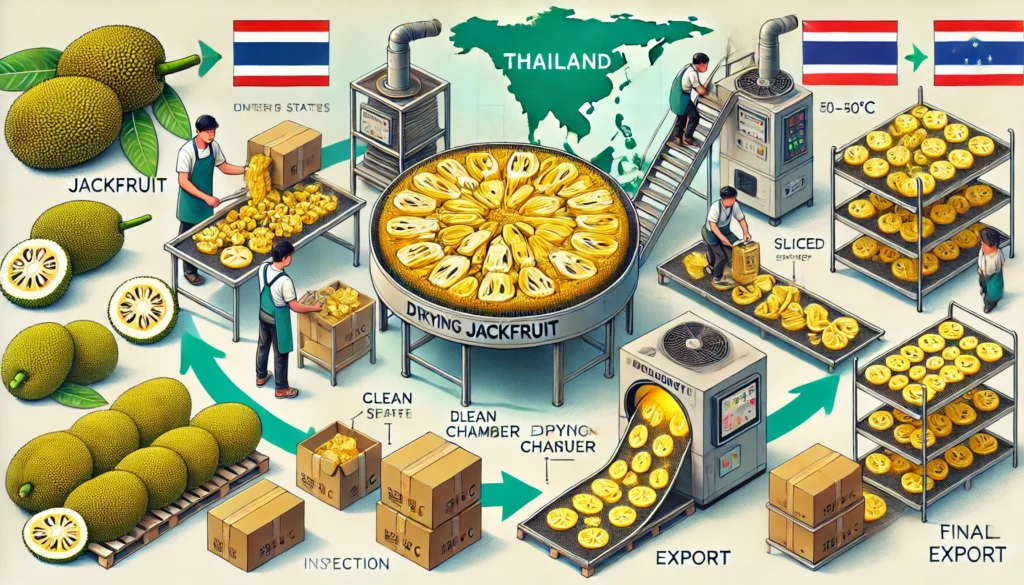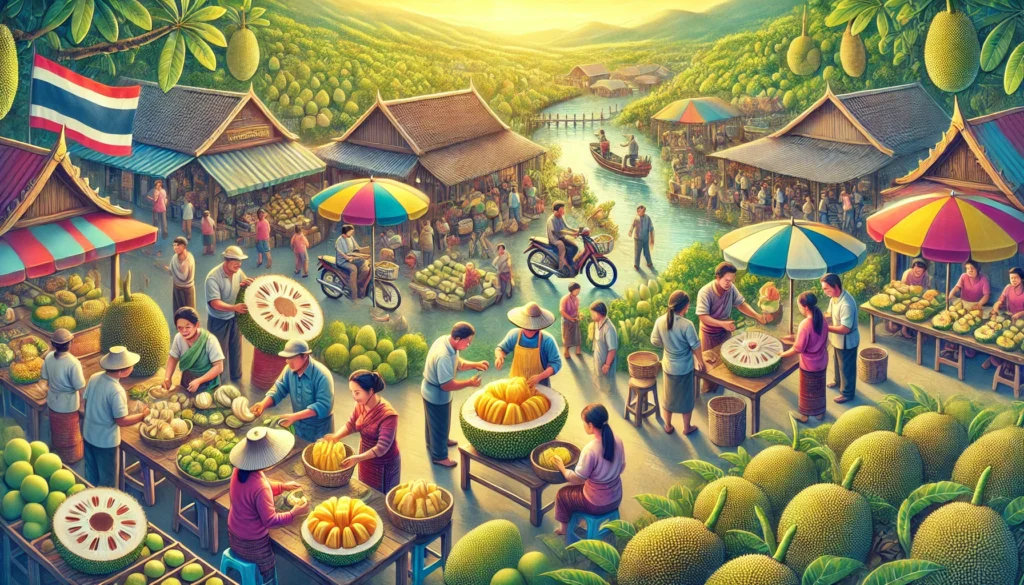Table of Contents
| Section | Content Overview |
|---|---|
| Introduction | Overview of dried jackfruit production. |
| The Journey of Jackfruit | Growing, harvesting, and processing stages. |
| Caring for Jackfruit Trees | Farming techniques and pest control. |
| Harvesting the Perfect Fruit | Skills involved in harvesting jackfruit. |
| Drying and Export Process | How dried jackfruit is prepared and exported. |
| Economic and Cultural Impact | The role of jackfruit in Thailand’s economy. |
Intro
Jackfruit, one of the tropics’ most celebrated fruits, is more than just a treat—it’s a symbol of Thailand’s agricultural expertise. Known for its massive size and sweet flavor, jackfruit holds a special place in both Thai households and the global export market.

Caring for Jackfruit Trees
Growing jackfruit begins with selecting high-quality seeds or grafted saplings. Farmers often choose grafting, which ensures that new plants inherit the best traits of their parent trees. Jackfruit thrives in Thailand’s tropical climate, particularly in well-drained sandy soil with a pH of 6.0–7.5.

Key Care Practices:
- Watering and Pruning: Early growth stages require regular watering and pruning to help the tree develop a robust structure capable of bearing heavy fruit.
- Pest and Disease Control: Farmers adopt natural and organic pest management methods, ensuring eco-friendly practices.
This meticulous care contributes to the growth of healthy, productive jackfruit trees.
Harvesting the Perfect Fruit
After 3–4 years, jackfruit trees bear fruit that can reach lengths of up to 90 cm and weigh between 5–30 kg. The harvest season, typically from March to June, is a busy period in Thailand. Farmers look for signs of ripeness, such as:

- Color Change: Green skin turns yellow.
- Sound Test: A hollow sound when tapped.
Harvesting jackfruit requires skill to avoid damaging the tree or the fruit, ensuring a high-quality yield.
Drying and Export Process
Once harvested, jackfruit undergoes several stages before being transformed into the dried delicacy loved worldwide.

Processing Stages:
- Cleaning and Peeling: The fruit is washed thoroughly to remove impurities.
- Flesh Separation and Slicing: The yellow flesh is separated and sliced evenly for uniform drying.
- Drying: Slices are dried at 50–60°C for 8–10 hours, preserving flavor and texture.
The dried pieces are inspected for quality, packaged, and shipped to international markets. Thailand leads the world in dried jackfruit exports, with the United States, Europe, and Asia being key destinations. In 2023 alone, over 100,000 tons of dried jackfruit were exported.
Economic and Cultural Impact
Jackfruit contributes significantly to Thailand’s economy, supporting thousands of farmers and workers. Beyond its economic value, jackfruit is celebrated in local culture, with vendors skillfully cutting and selling the fruit in bustling markets. This vibrant scene showcases not only the fruit’s popularity but also the dedication of Thai farmers.

Conclusion
From nurturing tiny saplings to exporting dried jackfruit, the journey of jackfruit highlights Thailand’s agricultural mastery. Every slice of dried jackfruit carries the story of hard work, sustainability, and the deep connection between farmers and their land.


